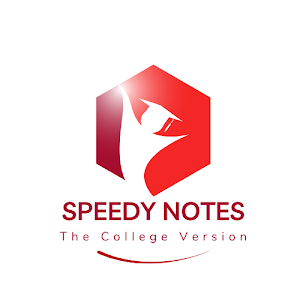Garret Hongo - Yellow Light
[alert-success] Woman Work
[/alert-success]
[alert-primary] Short Summary [/alert-primary]
[btn href="https://www.speedynotes.in/2024/05/american-literature-ii-msu-ii-ba-iv-sem.html" class="bt" btn]Back to Tansche[/btn]
Introduction :
"Yellow Light" is a poem by Garrett Hongo,
a contemporary American poet known for his exploration of themes related to
identity, culture, and the immigrant experience. In "Yellow Light,"
Hongo reflects on the experiences of Japanese Americans, particularly focusing
on the internment of Japanese Americans during World War II. The poem evokes a
sense of nostalgia for the past while also highlighting the enduring impact of
historical injustices.Garret Hongo uses descriptive language to effectively communicate both individual empathy and communal acceptance. This poem is full of vivid imagery and accurate representations of family members and community members as the poet refines his creative tendencies to explain the roots of his biological and ancestral history.
Short Summary:
The poem "Yellow Light" commences by directing its attention towards an unidentified woman from the working class.
"One arm hooked around the frayed snap
of a tar-black patent-leather purse,"
The woman mentioned in the poem is on her way to her home in a multicultural neighborhood in Los Angeles, a city that Hongo is familiar with. During the early evening hours, the preparation of cooking dinner on stoves begins, accompanied by a noticeable escalation of emotions. Adults returning home from work express their displeasure towards their children upon arriving home, as groups of schoolboys engage in a conflict.
"begins the three-block climb up the hill,
passing gangs of schoolboys playing war,"
"Yellow Light" utilizes opposing aspects to emphasize the marginalized individuals. The poet implies that he could have composed verses about butterflies and blooming vines had it been the season of spring or summer. However, in the present month of October, the season's ripeness appears to be abundant rather than appealing. The searchlights emanating from theaters in the uptown region and used-car lots act as radiant beacons that illuminate the sky.
The powerful brightness is sharply contrasted with the dull beams of light that are coming from the kitchen windows, effectively lighting up the streets of the Barrio. These two different lights, explain the title, yellow light.
The poem portrays the injection of liveliness into a community that is already densely inhabited and discontented, devoid of thrill and charm, and overwhelmed by monotony and unhappiness. Conversely, the lights in the uptown region, which serve as markers for the lively atmosphere, are distant yet nevertheless remain luminous, even when viewed from afar.
"a brilliant fluorescence breaks out
and makes war with the dim squares"
Conversely, the lights in the barrio flats and houses emit a dim glow. The anonymous female worker is penniless and exhausted, and Hongo warns his readers that her life is difficult and possibly lacking in enjoyment. In order to reach her apartment, she must walk uphill for many blocks from the bus stop and then climb two flights of stairs. As she climbs the stairs, her high heels produce a clicking noise reminiscent of kitchen knives on a chopping board. She performs repetitive activities regularly, but Hongo's depiction of them is far from usual.
The artist effectively conveys a sense of disdain for poverty and anger at the inability to overcome it by expertly integrating sharpness into his imagery. The poem's conclusion is both uplifting and realistic, suggesting that the routine may be disturbed or an event may occur to make it bearable, or perhaps problems will be hidden. The moon is portrayed as smoothly moving across a screen of eucalyptus, emitting a pervasive radiance reminiscent of yellow onions. The poetry is captivating, suggestive, and foreboding.
"Yellow Light" is a poem by Garrett Hongo, a contemporary American poet known for his exploration of themes related to identity, culture, and the immigrant experience. In "Yellow Light," Hongo reflects on the experiences of Japanese Americans, particularly focusing on the internment of Japanese Americans during World War II. The poem evokes a sense of nostalgia for the past while also highlighting the enduring impact of historical injustices.
Yellow Light" serves as a poignant meditation on the experiences of Japanese Americans and the lingering effects of systemic racism and injustice. Through its vivid imagery and evocative language, the poem invites readers to reflect on themes of identity, belonging, and the pursuit of justice.
Themes :
The yellow light and the Moon :
Yellow Light, Hongo's first poetry collection, was warmly acclaimed. The 1982 Discovery/The Nation Prize and National Endowment for the Arts Fellowship went to Hongo for the collection. The title poem, “Yellow Light,” the first poem in the collection, is precise, detailed, and focused on ethnicity and assimilation, on human tensions versus nature's calm and harmony.
The poem softly but significantly implies economic class division in addition to racial strife. In the middle of the poem, when the barrio is juxtaposed with geographically and economically distant regions of the city, the woman and her community's poverty becomes apparent.
The woman's community houses have greasy yellow cooking lights from vehicle lots and side streets. Some “better” districts of Los Angeles, “whole freeways away,” have movie theaters with “long silver sticks of light probe the sky.” Instead of the woman's neighborhood's lesser lights, these affluent neighborhoods' “fluorescence” is “brilliant”. Luxurious wealth “makes war” with dim neighborhood kitchen bulbs.
There is no evidence that the wealthy areas are aware of the woman's destitute community, but lights from entertainment complexes remind the barrio of what they lack and will never have. It is unclear if the woman lives alone. She has climb two flights of steps to reach her apartment. This is crucial because it develops physical and psychological growth. As the woman rises to unlock her home, the reader's mind rises to the moon. In times of trouble, one prays to the sky for deliverance. The bitterness and pettiness of human conflict and divisiveness contrast with the moon, symbol of nature and a higher force.
The moon is “cruising,” taking its sweet, delicious time. It “covers everything”—neighborhoods that have and those that have not—granting cosmic light equally. In the final stanza, it provides humanity a significant (“heavy”) blessing that bends down to meet them where they are (its light is like the “yellow onions” cooking in the barrio). The moon, a symbol of nature, and the May flowers in stanza 2 offer order and harmony to humanity's confusion, havoc, and decay (“smog” and “trash”). Thus, Hongo's poetry suggests a deeper reality that transcends the individual and community and emphasizes nature's balance.
[btn href="https://www.speedynotes.in/2024/05/american-literature-ii-msu-ii-ba-iv-sem.html" class="bt" btn]Back to Tansche[/btn]


.jpg)





0 Comments